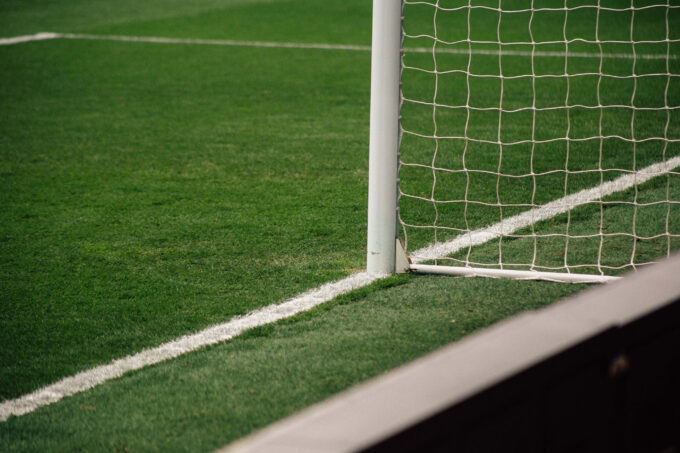100 years of SNV: Relationship between football fever and standards
Football is often referred to as the most beautiful pastime in the world. No other sport captures the imagination of the masses. In order to play fairly around the world, there are a few simple rules of the game - these are known to the majority of spectators. But there are also rules in the background of the football stages.

A World Cup football must meet strict requirements. The European standard SN EN 12235, for example, specifies test procedures, including for the bounce of the balls. If a ball is dropped from a height of 2 metres onto a concrete surface, it may bounce up a maximum of 1.35 metres. Therefore, it can never just bounce over a goalkeeper.
Natural grass or artificial turf? Some prefer artificial turf, while others believe that football can only be played on natural grass. At the 2018 World Cup, half of all 12 stadiums had hybrid turf, which was reinforced with synthetic fibres. According to the experts, the blades should ideally be 23 millimetres high. But how is that measured?
Game-determining standards
If everything is to be carried out in accordance with the standard, the European standard SN EN 12233 is used. It contains a procedure for determining the grass height. A special tool is used, which essentially consists of a measuring rod on which a round, movable disc is mounted. The distance between the tip of the rod placed on the ground and the disc resting on the blades is measured.
How stable are the goalposts in the stadium? The spectators hold their breath. The most nerve-wracking part of the final match begins. Another penalty shootout, you wouldn't believe it! The goalkeeper is feeling the pressure. It's all up to him now. The fans cheer as the first shot thunders against the crossbar. If it complies with SN EN 748, it gives way by no more than 1 centimetre when the ball hits it. The net extends at least 80 centimetres backwards at the top and 1.5 metres at ground level.
Without good gloves, even the best goalkeeper could only hold the ball with difficulty. If the defenders can't keep the ball out, the goalie is the last resort.
He has to do everything he can to make sure the ball doesn't go into the net! But he can't just rely on his own strength, agility and ultra-fast reflexes. Good gloves comply with the European standard SN EN 16027, which stipulates that gloves must not slip by more than 20 millimetres, even under considerable force, so that they can never slip off the hands.
Stadium seats
Soon the game will begin, fans will flock to the stadium in search of their seats. According to SN EN 13200-4, the distance between each seat in a row and the corresponding seat in the row in front must be at least 30 centimeters. That's not exactly generous, but once everyone is seated, it's only the match that counts anyway. But what other rules apply to seating? According to the standard, the seats must be able to withstand a weight of 2,000 kilograms and be at least 40 centimeters deep and 50 centimeters wide.
Lighting
Cameras have been set up around the pitch. The spectators want to see everything in detail! That's why it's really important that the cameras can record the game properly. It is obvious that the pitch must be well lit, but SN EN 12193 also contains details of the lighting required for television cameras. According to it, the area where the cameras are positioned must be 0.25 times brighter than the pitch! But there should not be too much light either. Stray effects of light can disturb people living around a stadium:
The standard specifies which light intensities are permitted in which competitions and in which environment - residential area, nature or large city - which amount of light is allowed to stream out above the horizon of the headlamps.
Football total - small country, big performance
After Switzerland had been relatively unsuccessful in the international arena since the 1960s, the sun was now rising in the sky for the "Swiss Nati" after around 30 years of lack of success. National coach Roy Hodgson ported the Swiss eleven to the 1994 World Cup and the 1996 European Championship, and the success was by no means unique. In the following noughties, our little country made it to two European and two World Cups in just one decade.
Under its national coach Köbi Kuhn, the Swiss national football team qualifies for the 2004 European Championship in Portugal and the 2006 World Cup in Germany. At the 2008 European Championship, it is automatically entitled to take part together with Austria, because the 2008 World Cup is being held in Switzerland and Austria. With Ottmar Hitzfeld, Switzerland will also play in the 2010 World Cup.
These standards are available in the SNV online shop:
SN EN 13061 (in German, French and English)
SN EN 16027 (in German, French and English)
SN EN 748 (in German, French and English)
SN EN 12233 (in German, French and English)
SN EN 12235 (in German, French and English)
SN EN 13200-4 (in German)









